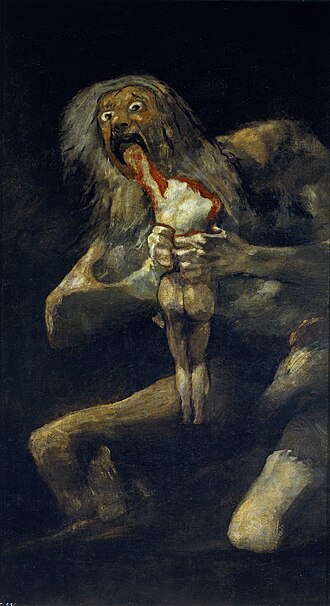If you haven’t heard the name, then you can probably recognize the painting Saturn Devorando a Su Hijo, or Saturn Devouring His Son. This is the most famous among Francisco Goya’s Black Paintings.
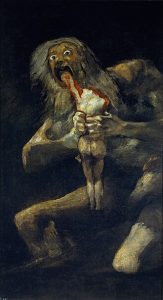
Goya’s Black Paintings are a series of 14 pieces created between 1820-1823, towards the latter end of his life. These pieces had dark subject matters, reflecting Goya’s pessimistic view on life and fear of insanity. Not only were they large, but they were painted on the walls of his home rather than on canvas. I should note that names of these paintings are originally in Spanish, as Goya was a Spanish artist, and are being held in the Museo del Prado in Madrid. The titles were not given by Goya. In fact, these paintings were not documented by him at all and the private nature of their creations makes it seem that Goya never intended them for the public at all. Their documentation was by a close friend of Goya’s, Antonio Brugada, who gave some of the names we use now.

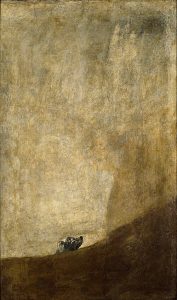
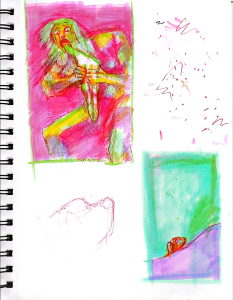
This month, I decided to begin an in-depth study of these 14 paintings. I started with the most famous, Saturn Devorando a Su Hijo, and then El Perro. For me, a large part of the allure of the Black Paintings is not only the subject matter but also their striking style. Goya consistently depicts his figures in dramatic lighting and a blank background. While usually black, some pieces like El Perro are on a contrasting light beige.
Truth be told, this was intimidating. I am largely unfamiliar with this style and Goya’s use of space and shading are both things I have trouble with (as seen in past publications, shading is usually a challenge for me). I was pretty ambitious to start with Saturn Devorando a Su Hijo and ended up going much slower on studies than I usually do because I was unsure of how to emulate his style. The most difficult part has been not relying on clear shapes and figures. Goya leaves parts of his pieces for the brain to fill in when viewing. I tend to draw very defined subjects and poses, which is to say, the opposite.
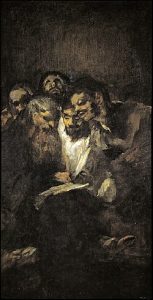

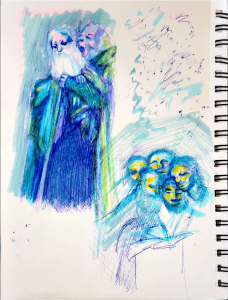
I enjoyed working on Dos Viejos, or Two Old Men, the most. By that point I had solidified a process that worked and I liked blocking out the figures. I don’t work in pen colors other than black that often, but by using a pen color that mostly matched the darkest value of color I used for the shadows, I could better understand the shading of the piece.

